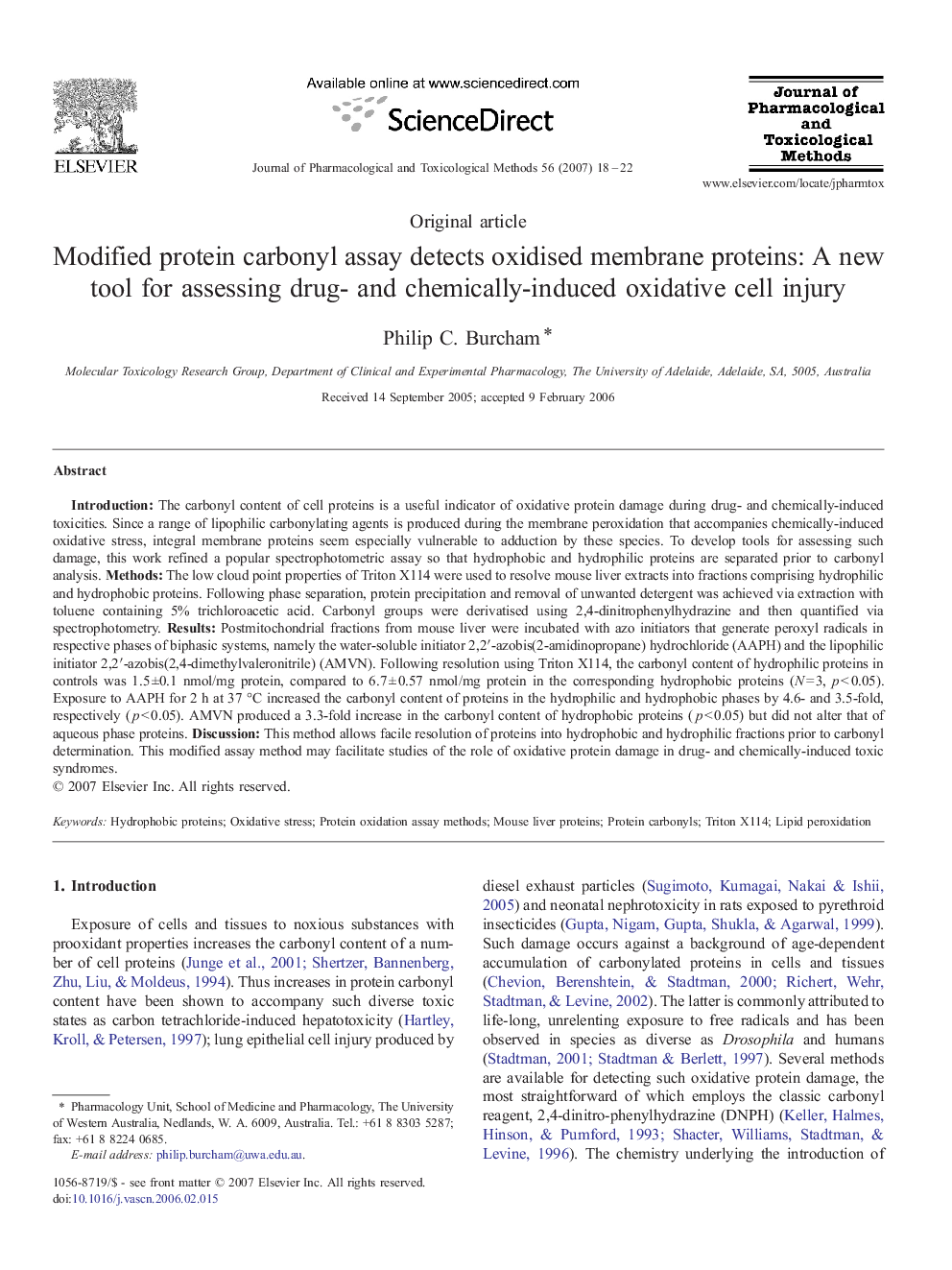| کد مقاله | کد نشریه | سال انتشار | مقاله انگلیسی | نسخه تمام متن |
|---|---|---|---|---|
| 2549929 | 1124532 | 2007 | 5 صفحه PDF | دانلود رایگان |

Introduction: The carbonyl content of cell proteins is a useful indicator of oxidative protein damage during drug- and chemically-induced toxicities. Since a range of lipophilic carbonylating agents is produced during the membrane peroxidation that accompanies chemically-induced oxidative stress, integral membrane proteins seem especially vulnerable to adduction by these species. To develop tools for assessing such damage, this work refined a popular spectrophotometric assay so that hydrophobic and hydrophilic proteins are separated prior to carbonyl analysis. Methods: The low cloud point properties of Triton X114 were used to resolve mouse liver extracts into fractions comprising hydrophilic and hydrophobic proteins. Following phase separation, protein precipitation and removal of unwanted detergent was achieved via extraction with toluene containing 5% trichloroacetic acid. Carbonyl groups were derivatised using 2,4-dinitrophenylhydrazine and then quantified via spectrophotometry. Results: Postmitochondrial fractions from mouse liver were incubated with azo initiators that generate peroxyl radicals in respective phases of biphasic systems, namely the water-soluble initiator 2,2′-azobis(2-amidinopropane) hydrochloride (AAPH) and the lipophilic initiator 2,2′-azobis(2,4-dimethylvaleronitrile) (AMVN). Following resolution using Triton X114, the carbonyl content of hydrophilic proteins in controls was 1.5 ±0.1 nmol/mg protein, compared to 6.7 ± 0.57 nmol/mg protein in the corresponding hydrophobic proteins (N = 3, p < 0.05). Exposure to AAPH for 2 h at 37 °C increased the carbonyl content of proteins in the hydrophilic and hydrophobic phases by 4.6- and 3.5-fold, respectively (p < 0.05). AMVN produced a 3.3-fold increase in the carbonyl content of hydrophobic proteins (p < 0.05) but did not alter that of aqueous phase proteins. Discussion: This method allows facile resolution of proteins into hydrophobic and hydrophilic fractions prior to carbonyl determination. This modified assay method may facilitate studies of the role of oxidative protein damage in drug- and chemically-induced toxic syndromes.
Journal: Journal of Pharmacological and Toxicological Methods - Volume 56, Issue 1, July–August 2007, Pages 18–22